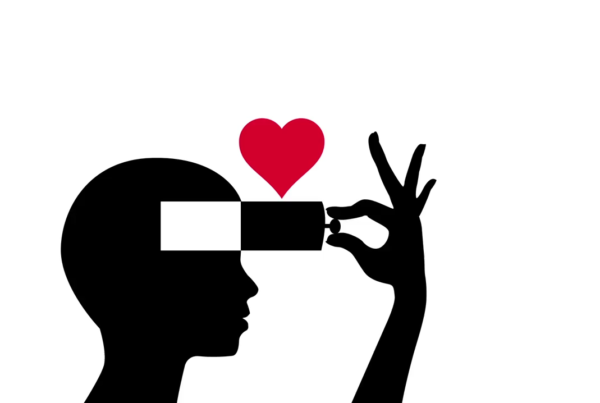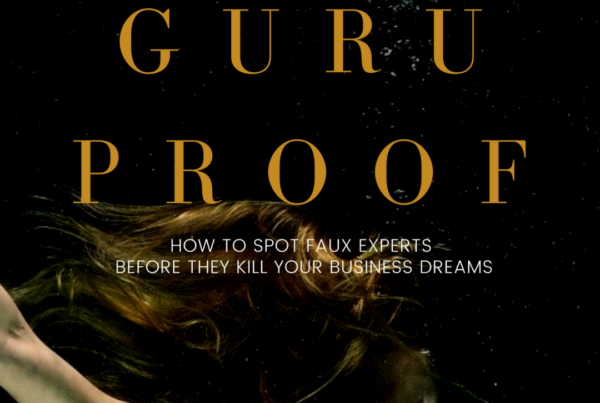
Good design begins with asking the right questions.
A guest post by Brian Jens
To create design that works, you must first ask the right questions, starting with those that help you identify a brand’s core values and promise to its target market. Whether you are the designer or the client, this is the ultimate message to be communicated by your design.
Some think design is merely the art of layout and a matter of visual decoration. Others believe its main purpose is functionality (although each person has his/her own understanding of what functionality is), with embellishment being the enemy of design. In fact, the mission of design runs deeper than just making a beautiful image or website for a brand.
Good graphic design blends the science of non-verbal communication with artistic creativity. It’s an end result where everything that needs to be said is communicated without words and in a way that allows the brand’s message to be intuitively understood. That is why it is very important to understand the characteristics of both the brand and its target market — your design must speak to both.
Knowledge of graphic design trends will help you to get right on target. Let’s have a look of what to expect in 2016.
1. Long website pages that scroll
More than 50% of users access the internet from mobile devices where traditional navigation menus are more cumbersome to use. For mobile users, it’s more convenient to just scroll longer pages to explore a website. Long scrolling becomes the norm for the “About Company” and “About Product” web pages, representing the diversity of content on a single page.
2. Large-format images and giant fonts
This trend began in 2014 and gained momentum in 2015. Now, many web sites look like expensive glossy magazines, especially since unique professional images are easy to obtain. Information is consumed faster visually; expect to see a lot of large-format images in 2016 and beyond.
Typography improves every day. Public libraries of web fonts allow greater freedom to designers. Expressive typography provides for larger headlines and leads; legible text makes a website more vivid and attractive.
3. Storytelling and user interaction
It’s no secret that exclusive, interactive content is a huge plus for a website. That is why, in 2016, web design is going to use methods where not only the content tells the story, but the whole website becomes a mechanism that brings the story to the user.
4. Use of drop-down and hidden menus
Responsive design surrounds us. It seems only recently we thought of the perfect desktop version that displayed consistently in different browsers. Today, consistent display on any device, regardless of its size, is an indispensable requirement.
Drop-down menus in an application subject all elements of the design to a style and logic understandable by all users. For example, the standard position of a hamburger menu is hidden behind an icon of a typical hamburger. In 2016, designers will move away from the use of the hamburger icon (with its hidden menus) in favour of presenting visible elements such as the horizontal menu with tabs we’re now seeing on YouTube.
5. Disappearance of optional elements for simplification
Some things never change and the beauty of simplicity is one of them. Good design is design from which there is nothing that needs to be removed. Simplification remains a trend: the rejection of large images on background and use of perfected typography instead is what will dominate in 2016.
Design that is clean, simple, and not overloaded with unnecessary images is what highlights a website from tens of thousands of others with overloaded design elements and an overabundance of pictures.
6. Background videos
In 2015 we’ve seen big beautiful background images under the big beautiful typography. Now background videos are rising to prominence. It could even be called a kind of video graphics boom! The increase in average speed of connection led to the convenient use of high-quality videos that show the main concept of your brand and the direction in which you are moving in the marketplace.
7. Almost flat design
Since Microsoft and Apple promote flat design, nothing can prevent its domination in 2016. Every website and application should be simplified as much as possible. Flat design is a major design trend that continues to evolve.
Flat elements now have some physical properties of real objects, such as thickness, density, or shadow. Material design from Google is the best example of this trend. In 2016, flat icons will come along with various illustrations and fonts, allowing logos to look as neat and tidy as possible, especially on mobile devices and smartphones.
8. More hand-drawn elements
The value of work done by hand has always been difficult to overestimate. But in web design this rule still doesn’t work. However, the use of elements drawn by hand is becoming extremely popular. Some companies even redesign their websites to better suggest a more human feel by using handwritten typography, especially in relation to first and second level headers. We are also likely to see a greater use of stylized illustrations and drawings made from photos in an attempt to connect with the audience in a more personal way.
9. Continued use of cinemagraphs
Creating a cinemagraph is more complex than just inserting a video or an image. However, it makes a website unique. This trend is related to storytelling; it enhances the story by making it brighter. Using short repetitive videos that resemble gif-images is not exactly innovative but there is a renewed interest in it with the improvements in the technology underlying such visual effects.
10. Increased reliance on speed and performance
Most of above-mentioned trends are designed for high-speed Internet access and powerful devices. Not all users have such resources. The handling of user information, download speed, and website operation — together with related design technologies — should be accelerated and simplified while remaining both creative and attractive.
The most important factor in creating high-quality design is understanding what you are missing and the results you want to achieve. Determine your path from the past to the future and stick to it.
BIO: Brian Jens will introduce you to the latest trends in web design and fashion. He’s fond of everything new, no matter how far new is from the field of design. A freelancer for many years, Brian is currently working at DesignContest as a blogger and designer.
More next time. Until then, remember to LOVE YOUR WORK, whatever it may be.
PS Did Brian’s post speak to you? If so, please feel free to share it with your own communities, friends and followers. Thanks for sharing the love! ♥♥♥



